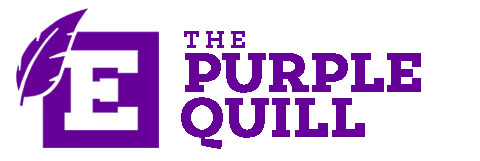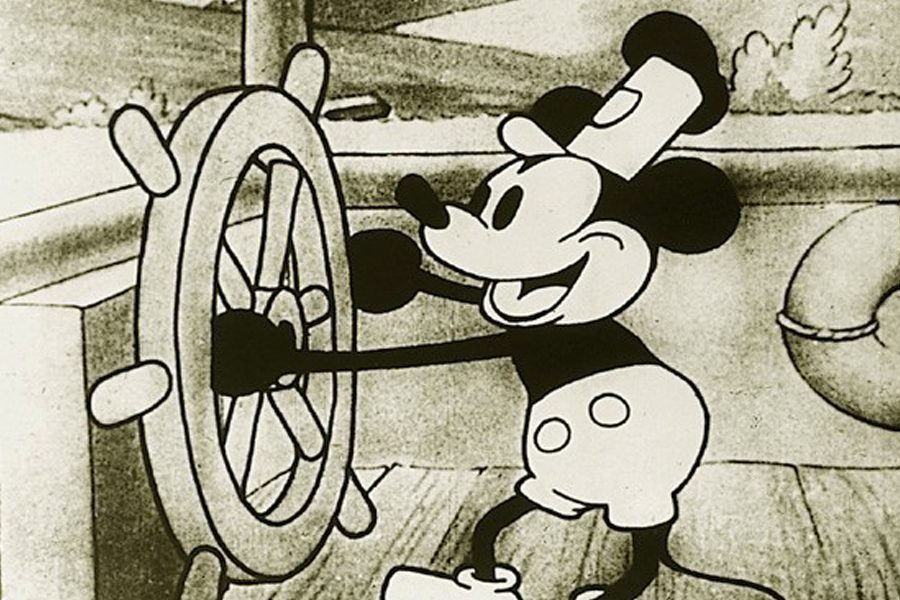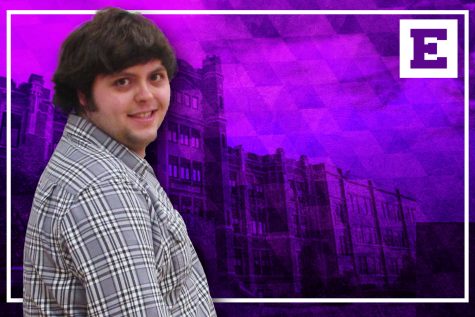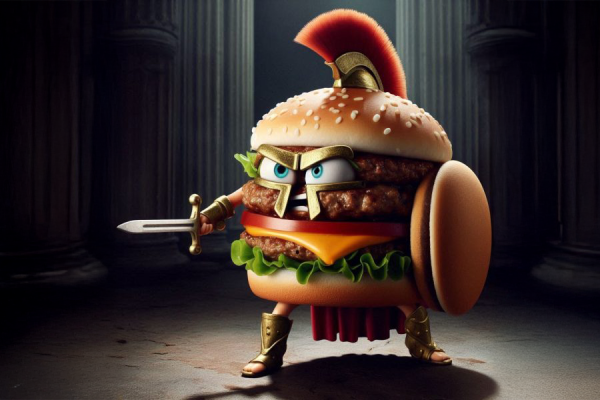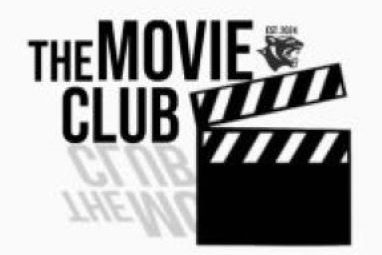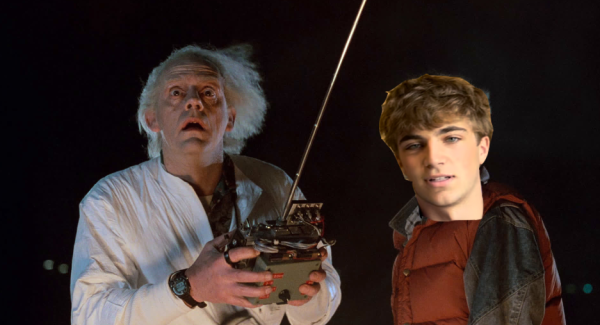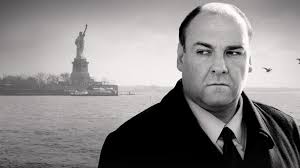Animation: Painting the picture
What goes into a cartoon?
Well, a lot.
A lot goes into any show, in fact, far more than people will normally ever know about and cartoons are no different.
Some of the most legendary shows that have come to television have been animated, and some of the most memorable movies have been cartoons. From Disney to Nickelodeon, since their advent in the late 20’s, animated features have pervaded every genre and type of entertainment. There have been animated musicals, drama, action, and comedy. There are even Academy Awards that specifically recognize cartoons, the Annie Awards.
But what actually goes into making a cartoon?
Well, I want to outline the steps and processes that go into making a cartoon that make it different than any other type of creative production.
What makes something animated, first of all?
Well, theoretically, something is considered animated when it isn’t filmed by capturing footage of something that is moving–live action. So, something is animated when it is a compilation of non-moving pictures or parts. There are several different recognized types of animation beyond just a cartoon. They can be classified thus:
Stop-motion: Stop motion is the process by which models are posed, captured, and then reposed. A good example of stop motion would be the series Robot Chicken which creates motion by taking a picture of the model, moving it, and then taking another picture.
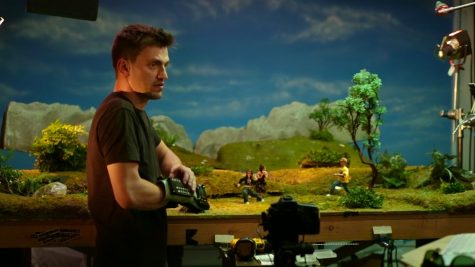
Clay-Mation: Clay-mation is a subset of stop motion that uses clay models rather than complete dolls. Same method.
Mixed Media: Mixed media is animation created through consecutive pictures, using stop motion on cutouts, or combining several types of animation at once.
CG: Computer generated animation is primarily that of effects work. It utilizes the motion and aspects of a real physical object and animates on top of them, syncing it as they go. This is “green screen” animation. Think of the dragons in Game of Thrones.
3D: 3D uses several of the same precepts as CG, but doesn’t enhance or rely on existing footage. 3D is done by creating models and setting movement and motion paths for those models. Then, the most complicated parts are the minutiae of the movements and keeping the animation clean looking. This is one of the first animation types to break free of the frame constrictions, often placing more of a focus on seconds of time than of frames on footage. Cartoons animated this way include the Star Wars: the Clone Wars series and Pixar films. Programs for this include Blender and Maya.
Hand-drawn (traditional): this is the style used for pretty much every cartoon pre 2000. Each frame of movement had to be redrawn individually while backgrounds were normally painted in watercolor and recorded using a multiplane camera to produce the illusion of depth. They would use animation cells and tracing paper and any array of ink or markers to fill in the color. This was time consuming and very expensive to say the least, but a viewing of any classic Disney film shows that it produced very satisfying results.
In fact, to add another piece of information, old Disney utilized rotoscoping. This method had animators drawing the frames of animation drawn over actual live action frames of a movie. The woman who voiced Alice in Alice in Wonderland, for example, actually had to do all of Alice’s movements and physical actions in order for the animators to capture over it, keeping the cartoon fluid and anatomically correct.

Hand Drawn (Digital): This is the modern high standard. Rather than use tracing paper and physical animation cells, they are swapped for keyframes and background PNGs. Hand drawn is still hand drawn, though, and even if they are using a Wacom drawing tablet and Adobe Animate they are still redrawing each frame of movement. This will include any animated feature produced after 2000 and many TV shows. Programs for this include ToonBoom and Adobe Animate as mentioned.
Tweening- Puppet Rigging: The standard for television, tweening and puppet rigging are cheap and extremely fast alternatives to traditional animation methods. Essentially, pieces of a character are drawn separately, then they are chained together in whatever program is being used, and their individual parts of movement are set to movement and position timers like 3D animation. This way the characters only need to be drawn once rather than every frame. South Park, Rick and Morty, and Archer are just a few of the shows that utilize this method. Programs used can include Adobe After Effects, Adobe Flash, Adobe Animate, and ToonBoom.
With the types or anination covered, I can now go into the method.
The first step of any show would be the concept. Since I’m not doing a run down of how all of TV works, lets assume the show is approved and given a modest budget of two and a half million dollars to produce a 12 episode season. This is fair given that the low end of the cost of an animated show is $256,000 per 22 minute episode. That’s 2.2 million dollars an episode for a show like Family Guy. First is the writing. Boring, but important.
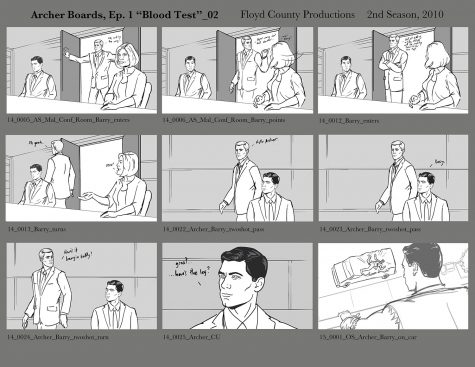
With the episode written it is revised and rewritten and revised and rewritten and then they do a table read–where the actors read through their parts together in what is almost a rough run of the episode–and then the script is probably revised again. Then they produce a storyboard. Essentially this is a comic-book version of the episode that is fully drawn out (normally even for live action shows) that gives everyone an idea of the camera angles and timings. The story-board artists will also normally be the head writers and creators of the show when it comes to cartoons.
Once the storyboard is done, it is sent to the actual animation studio. Almost none of the animated shows on TV today are actually animated in America, so the storyboard will be sent to either India (Family Guy) Taiwan or Japan (most Cartoon Network Shows) or the Philippines (some odd shows.) Then, those overseas studios will send back an animatic while the actors of the show record their voice lines.
The animatic is essentially an extremely low effort version of the show. The movements will be jerky and there will almost never be color, but this is still an important step. Just like an artist has to outline a drawing before the brush touches the paper, an animator need to gauge the episode from the animatic. The voice lines are applied at this point to make sure that the jokes connect and the censors get their final crack at the content.
If the animatic is approved (or if edits are made), it is then sent off for official production. American artists are normally contracted for background drawings and foreign studios draw the action. The final product is sent back in a few weeks or months when it is done, backgrounds are touched up and any post editing is completed, and the show is done.
You can find any number of tutorials as to how animation is actually made, but because I can, I’ll break down the basics.
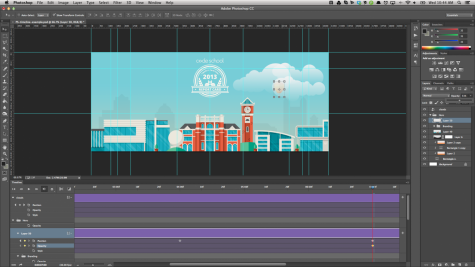
These rules will generally apply to the following programs (to my knowledge): ToonBoom, Adobe Flash, Photoshop, and Animate, and OpenToonz.
If you want to produce your own animation you probably need one of these programs. You will also need a digitizer tablet or drawing tablet. Something along the lines of a Wacom Intuos ($100) up to a Wacom Cintiq (~$1700+) should do fine.
Find the way to add keyframes (individual pictures) to the timeline (the literal order of these pictures) and do it–normally with a right click followed by “convert to blank keyframes.”
Then enable any type of onion skin (the effect that lets you see what you’ve drawn on frames before and after the one you’re on) and start drawing. Simply place one picture in front of another, one keyframe to the next, and you’re animating. Fun fact, with either Flash or Photoshop–both of which come preloaded on our school computers–you can easily achieve this process.
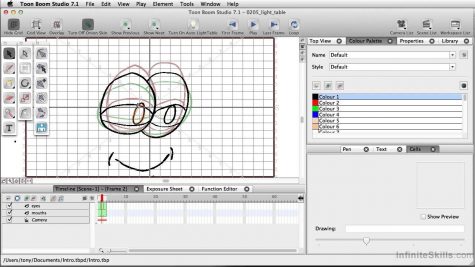
Here is a link that should help with Flash (even though it is for Animate, Animate is just the fancy name for the newest version of Flash)
https://helpx.adobe.com/animate/tutorials.html
Here is a link for animating in photoshop
http://www.alexgrigg.com/pages/photoshop-animation-techniques
And here is a link for ToonBoom’s website. I’m not sponsored by them, but they are the professional standard of animation, nearly every show uses them.
There are entire books on this process, and I hope to include a tutorial on how to convey motion in animation with this video. To view this video, click here.
I hope I have been enlighten you on the whole process at least a little. There are whole books on this subject, so this article has ended up painfully short for me, but I encourage people to explore the medium.



